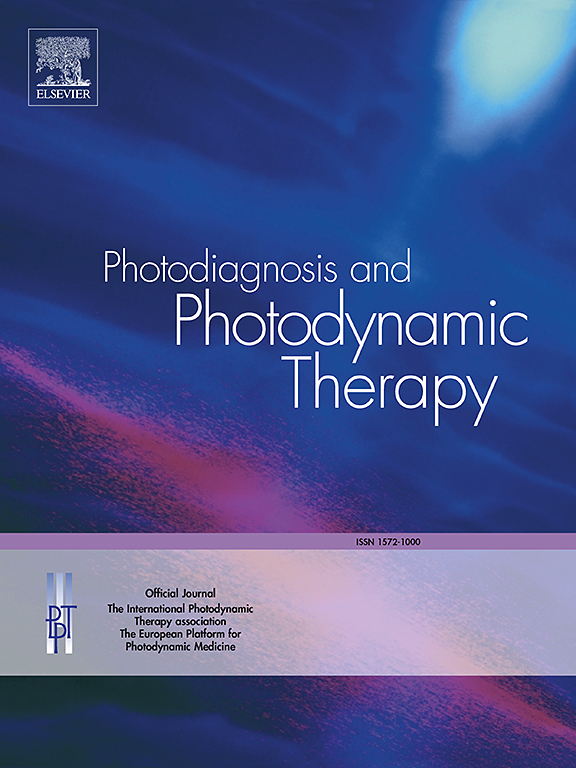Topical riboflavin versus 5-aminolevulinic acid photodynamic therapy for the treatment of mild to moderate acne: A split-face randomized study
IF 3.1
3区 医学
Q2 ONCOLOGY
引用次数: 0
Abstract
Background
ALA-PDT has been widely used in mild to moderate acne vulgaris worldwide. However, very few studies used riboflavin-PDT to treat acne vulgaris.
Objective
To investigate the efficacy and adverse events of riboflavin-PDT to treat mild to moderate facial acne, and compare it with ALA-PDT on a non-inferiority basis.
Methods
33 eligible patients were enrolled, and 30 patients completed follow-up. Either side of the face was assigned randomly to riboflavin or ALA blue-light-PDT. Patients received 3 sessions of PDT in 1-week intervals and were followed up at weeks 4, 6, and 10.
Results
Both ALA and riboflavin-PDT significantly reduced non-inflammatory and inflammatory lesions at weeks 4, 6, and 10 compared to baseline (P all <0.001). For the primary outcome, the difference in the improvement rate of total lesions between the Ribo and ALA side was 2.6 % (-4.3 %, 12.5 %; p = 0.71), which didn't reach the inferiority margin. Patients described greater in-treatment pain and burning sensation (P < 0.001), more prominent post-treatment erythema (P = 0.003), hyperpigmentation (P < 0.001), and desquamation (P = 0.006) on the ALA side than on riboflavin side.
Conclusion
The efficacy of riboflavin-PDT was comparable to that of blue-light ALA-PDT in treating mild to moderate acne vulgaris. Riboflavin-PDT had fewer in-treatment and post-treatment adverse events than ALA-PDT.
局部核黄素与5-氨基乙酰丙酸光动力疗法治疗轻度至中度痤疮:一项裂脸随机研究。
背景:ALA-PDT在世界范围内广泛应用于轻中度寻常性痤疮。然而,很少有研究使用核黄素- pdt治疗寻常性痤疮。目的:探讨核黄素- pdt治疗轻、中度面部痤疮的疗效及不良反应,并与ALA-PDT进行非劣效性比较。方法:33例符合条件的患者入组,30例患者完成随访。面部两侧随机分配核黄素或ALA蓝光pdt。患者每隔1周接受3次PDT治疗,并在第4、6和10周进行随访。结果:与基线相比,ALA和核黄素- pdt在第4周、第6周和第10周均显著减少非炎性和炎性病变(P均)。结论:核黄素- pdt治疗轻中度寻常性痤疮的疗效与蓝光ALA- pdt相当。与ALA-PDT相比,核黄素- pdt治疗期间和治疗后的不良事件较少。
本文章由计算机程序翻译,如有差异,请以英文原文为准。
求助全文
约1分钟内获得全文
求助全文
来源期刊

Photodiagnosis and Photodynamic Therapy
ONCOLOGY-
CiteScore
5.80
自引率
24.20%
发文量
509
审稿时长
50 days
期刊介绍:
Photodiagnosis and Photodynamic Therapy is an international journal for the dissemination of scientific knowledge and clinical developments of Photodiagnosis and Photodynamic Therapy in all medical specialties. The journal publishes original articles, review articles, case presentations, "how-to-do-it" articles, Letters to the Editor, short communications and relevant images with short descriptions. All submitted material is subject to a strict peer-review process.
 求助内容:
求助内容: 应助结果提醒方式:
应助结果提醒方式:


